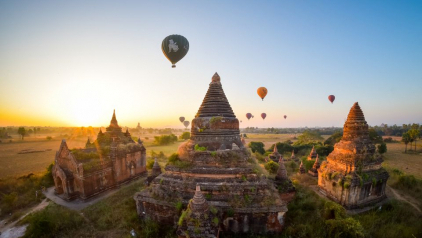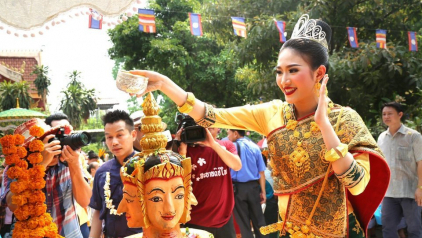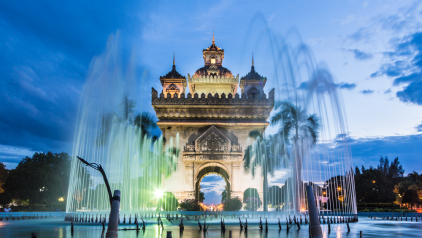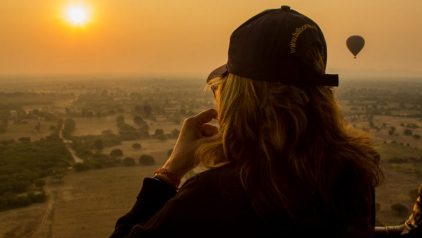Laos Guide - All you need to know
Laos has a rich history stretching back 10,000 years. At its height, it ruled over present-day Laos and much of neighboring northern Thailand. Landlocked and laid-back, it’s a unique spin on the Southeast Asia experience.
Laos, officially the Lao People's Democratic Republic is the only land-locked country in South-East Asia and is bordered by China, Vietnam, Cambodia, Thailand, and Myanmar. The Mekong River, almost half the length of which flows through Laos, forms most of the border with Thailand. Large population centers (including Vientiane, Luang Prabang, Pakse, and Savannakhet) lie on the Mekong.
The capital city is Vientiane, the largest city of Laos, on the banks of the Mekong River near the border with Thailand. Its total land area, much of which is mountainous and densely forested, is approximately 237.000 km2.

Patuxai, the most iconic landmark of Laos
Lao History
The earliest inhabitants of Laos were hunter-gatherers. Later they were farmers growing rice and pulses. The first farmers used stone tools; bronze was used in Laos from about 2000 BC and iron from about 500 BC.
From the 1st century to the 13th century, Laos was under the control of many regimes including Indian merchants, the Chams, Buddhist Indian Indonesians, the Khmers, and the Thais Siam respectively. In the 14th Century, King Fa Ngum founded the ancient kingdom of Lan Xang (Kingdom of a million elephants), ancestors of today's Laotians.
In the 16th century, Vientiane became the capital in 1563 due to fears of a Burmese invasion. In the 17th Century, Lan Xang Kingdom entered its most illustrious era. This golden age was followed by in-fighting for the throne, which led to the break-up of Lane Xang into the three kingdoms: Vientiane, Luang Prabang, and Champasack. All of these civil wars weakened the kingdom, thus creating opportunities for new foreign aggressors to invade. After centuries of gradual decline, Laos came under the domination of Siam (Thailand) from the late 18th Century until the late 19th Century.

Buddhism, the most significant and sacred religion in Laos
From 1893, Laos became a French protectorate until 1945, when it is briefly occupied by the Japanese towards the end of World War II. Laos gains full independence as a constitutional monarchy. However, in 1946, French rule over Laos was resumed. In 1954, the Vietnamese victory at Dien Bien Phu marked the end of the French protectorate in Laos.
On December 2nd, 1975, congress representatives had a meeting, accepted the abdication of the king, and proclaimed the People’s Democratic Republic of Laos with the Lao People's Revolutionary Party (LPRP) the only legal political party.
Laos has strong political links with Vietnam. The 1977 Treaty of Friendship and Cooperation between Laos and Vietnam covers defense arrangements, delineation of the border, and Vietnamese economic assistance to Laos. Other important bilateral partners are China and Thailand.
Laos Culture
The official language is Lao, a tonal language similar to Thai. Among younger Lao, English is now the most widely spoken second language.
The population of Laos is diverse with 49 broad ethnic groups recognized by the Government of Laos, divided into 149 sub-groups and 80 different languages. About half of the population in Laos is Lao Loum people, "lowland Lao" who live in the river plains and mostly along the Mekong region.
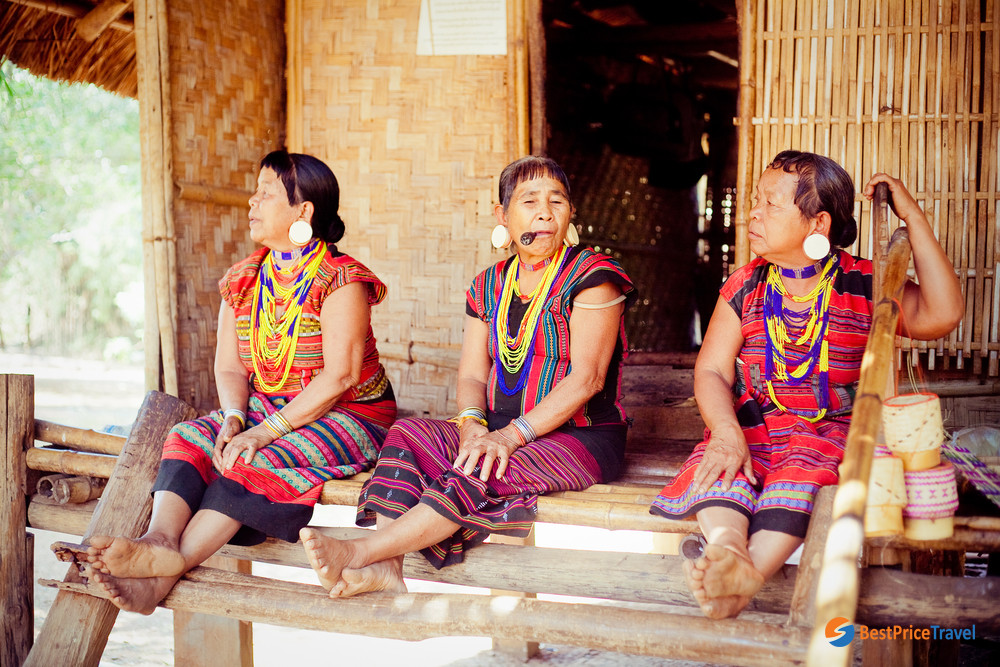
Unidentified Alak tribe women in Laos
Collective tradition in Laos culture expresses in work or community tasks. They share equal responsibility in community tasks. The rich culture of Laos is rooted in immense spirituality, as the predominant religion of Theravada (Hinayana) Buddhism. Theravada Buddhism is followed by approximately 60% of the population and a higher proportion of members of the Lao-Tai language ethnic groups. Animism is still widely practiced among a number of minority groups, especially in the more remote rural areas.
Laotians are truly people of heart. They may show shyness with strangers and rarely initiate a conversation with someone they do not know, except, perhaps, if they wish to practice their English. Laotians tend to keep more physical distance from each other than Westerners. However, if comfortable with you, a Lao person will touch you a lot, especially among women.
Laos Weather
Without a coastline border, Laos's weather is relatively straightforward compared to most of Asia. The temperatures average high, ranging from 15°C to the mid-30s throughout the year.
There are two distinct seasons including the dry season from October to April and the wet season from May to September. The early months of the wet season, May to July, remain hot temperature and short-lived rainfall; whilst heavy rains last more constant in the latter months, significantly in southern Laos.
The months between November and February are the best time to visit Laos when the coolest and driest days give you more pleasant experiences as well as more country's vibrant festivals to enjoy.
Transportation in Laos
Getting to Laos
The most convenient way is flying to Laos via many international airways like Lao Airlines, Vietnam Airlines, China Southern, Thai Airways, Bangkok Airways and EVA Air. If you're already in the region, check out the low-budget flights of Air Asia. Also, you can seek the best flights gathered here. Most of the international flights to Laos offer you transit at the Suvarnabhumi Airport in Bangkok, the central hub connecting to the airports of Luang Prabang, Vientiane, and Pakse. Aside from booking a flight, you can catch a night bus or train at more affordable costs from major cities in Southeast Asia.
Getting around Laos
Buses, trains, and taxi cabs are the most popular ways to travel a long distance. Within cities or regions, you can take a taxi, tuk-tuk, or rent a bicycle or motorbike which is available in most travel agents and hotels in Laos.
Travel tips
Lao visas
To request a Lao visa on arrival, you can contact the Lao Embassy in your country for various fees depending on your nationality. The costs usually range from US$ 30 to US$ 45 for citizens from American and European countries. You can stay in Laos for up to 3 months without leaving the country with a visa extension. In case of asking for a visa extension, you can go to the Immigration Department in Vientiane or Luang Prabang, the Police Station in Pakse, and many other cities. It's noticed that extensions are not available in Savannakhet. The cost of extensions is 20,000 kip per day plus a small "form fee" varying from 5,000 kips to 25,000 kips.
Electricity socket
The AC electricity is 230V with the power outlets of two-prong round or flat sockets. If you come from North America or Europe, the power adaptor will accommodate both kinds of plugs. It should be highly recommended to bring a universal travel adaptor to avoid the hassle of buying new adapters everywhere.
Dangers
Known as one of the most secured Southeast Asian countries, Laos has a low crime rate according to international standards. However, visitors should be careful when going out to tourist areas. In case of emergency, you should contact one of these essential numbers consisting of the ambulance (1195), fire (1190), police (1191), and tourist police (021-251-128).
Money
The Lao currency is the kip (K) with nominal values varying from 500 to 100,000 kip. Changing money should be best done by licensed money-changing booths at a bank or at the airport. Find out some of the most reliable banks for currency exchange, which offer good rates and extended opening hours. It’s also able to exchange money at shops, hotels, or markets for no commission but at good rates. US dollars and Thai baht are widely accepted in busy tourist areas while only large hotels, shops, and restaurants accept credit cards.
Recommended Laos Tours
-
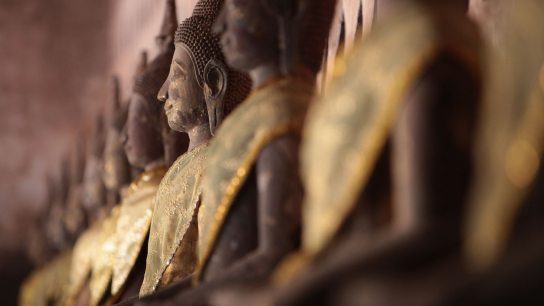 Best of Laos 11 days - Private Tour9.6Excellent - 6 reviewsLuang Prabang - Vang Vieng - Ban Thaheua - Vientiane - Pakse…/pax
Best of Laos 11 days - Private Tour9.6Excellent - 6 reviewsLuang Prabang - Vang Vieng - Ban Thaheua - Vientiane - Pakse…/pax -
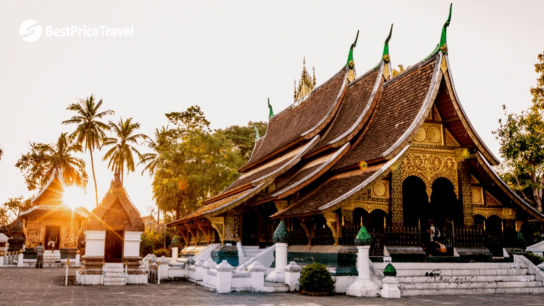 Highlights of Laos - Vietnam - Cambodia 15 days9.3Excellent - 9 reviewsLuang Prabang - Vientiane - Hanoi - Halong Bay - Hoi An - Hue…/pax
Highlights of Laos - Vietnam - Cambodia 15 days9.3Excellent - 9 reviewsLuang Prabang - Vientiane - Hanoi - Halong Bay - Hoi An - Hue…/pax -
 Highlights of Vietnam & Laos 14 days9.4Excellent - 3 reviewsHo Chi Minh City - Cu Chi Tunnels - Mekong Delta - Hue - Hoi…/pax
Highlights of Vietnam & Laos 14 days9.4Excellent - 3 reviewsHo Chi Minh City - Cu Chi Tunnels - Mekong Delta - Hue - Hoi…/pax
